The pause squat is a fantastic exercise that helps improve your squat technique, lower body strength, and explosive power.
After reading this post, you will learn:
- How to do pause squats correctly,
- The benefits of pausing each rep, and
- How to include this exercise into your routine.
Let’s get started.
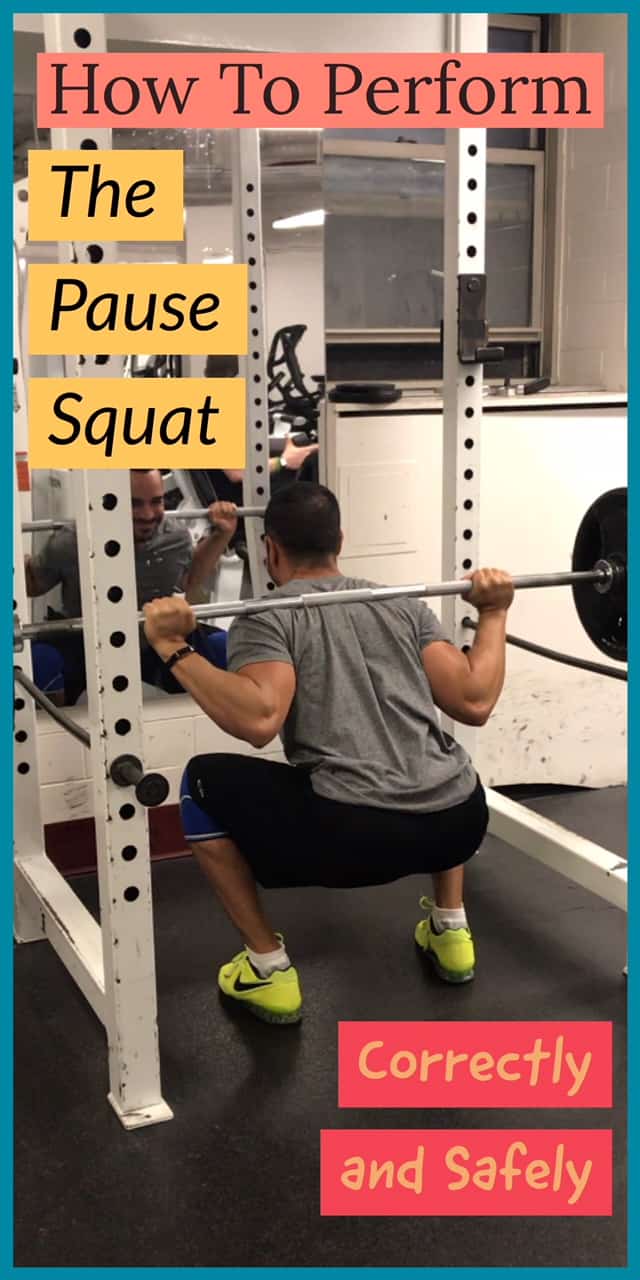
PAUSE SQUATS VS SQUATS
Pause squats are a very close variation to the regular back squat. The only difference is that the pause squat requires you to come to a complete stop in the bottom position.
As such, pause squats are one of the most difficult squatting variations possible.
You must maintain absolute tightness and proper positioning in the bottom position, which will help improve your overall squatting technique and your explosive strength.
Here’s a video on how to do this movement with good form.
PAUSE SQUAT FORM VIDEO
PAUSE SQUAT BENEFITS
Here are the top reasons you should do pause squats in your training routine.
The pause squat:
- Builds maximal strength as you are required to reverse the movement from a dead stop
- Improves explosive power
- Improves your squatting technique
- Can help you break through squatting plateaus
- Improves confidence in the most challenging part of the movement
- Improves mobility in the hips, ankles, knees, and thoracic spine
- Encourages strength development of the quadriceps, hamstrings, glutes, and abdominal muscles
- Increases time under tension (TUT), which can increase muscle mass/hypertrophy
MUSCLES WORKED DURING THE PAUSE SQUAT
- Quadriceps
- Hamstrings
- Glutes
- Adductors
- Core
- Lower Back (Spinal Erectors)
- Upper Back
PERFORMING THE PAUSED SQUAT WITH PROPER TECHNIQUE
- The pause squat is performed exactly the same as a regular back squat
- Approach a barbell set up in a power rack at the mid-chest (above the nipple) level
- Set your grip on the bar just outside of shoulder-width with your thumbs wrapped around the bar
- Dive underneath the bar and position it on the natural shelf created between your trapezius muscles and the top of your scapula
- (If you are performing a high bar squat, the bar will go on top of your trapezius muscles)
- Squeeze your scapulae together without shrugging and maintain this position throughout the entire lift
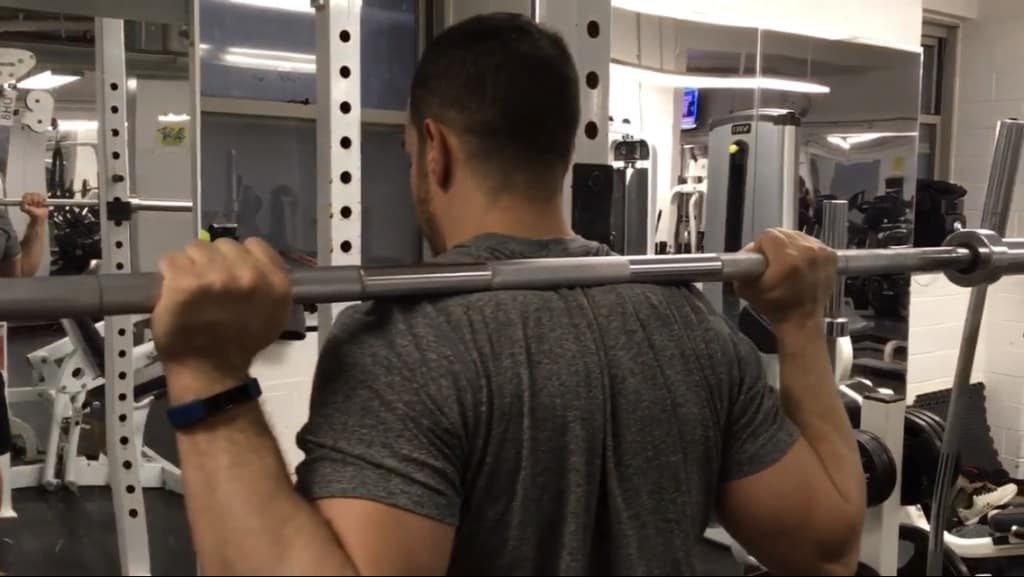
- Stand up with the weight and take up to three steps back to position your feet just outside of shoulder-width
- You can point your toes straight or angled out 15-30 degrees
- (This is the same starting position as any normal squat)
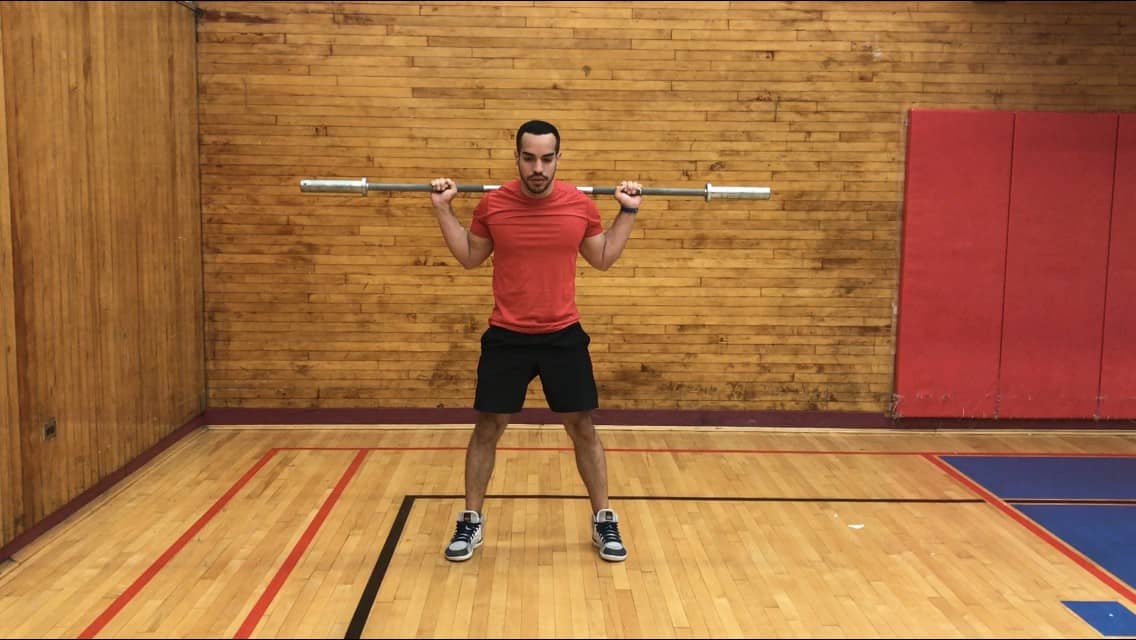
- Take a big breath, brace your core, and begin the movement by simultaneously bending at the hips and knees until your depth is just ‘below parallel’
- ‘Below parallel’ means that your hip crease is below the top of your knee when looking from the side
- Keep your head neutral, your feet flat on the floor, your core braced, and your back flat
- Stay motionless in the bottom position for 2 seconds
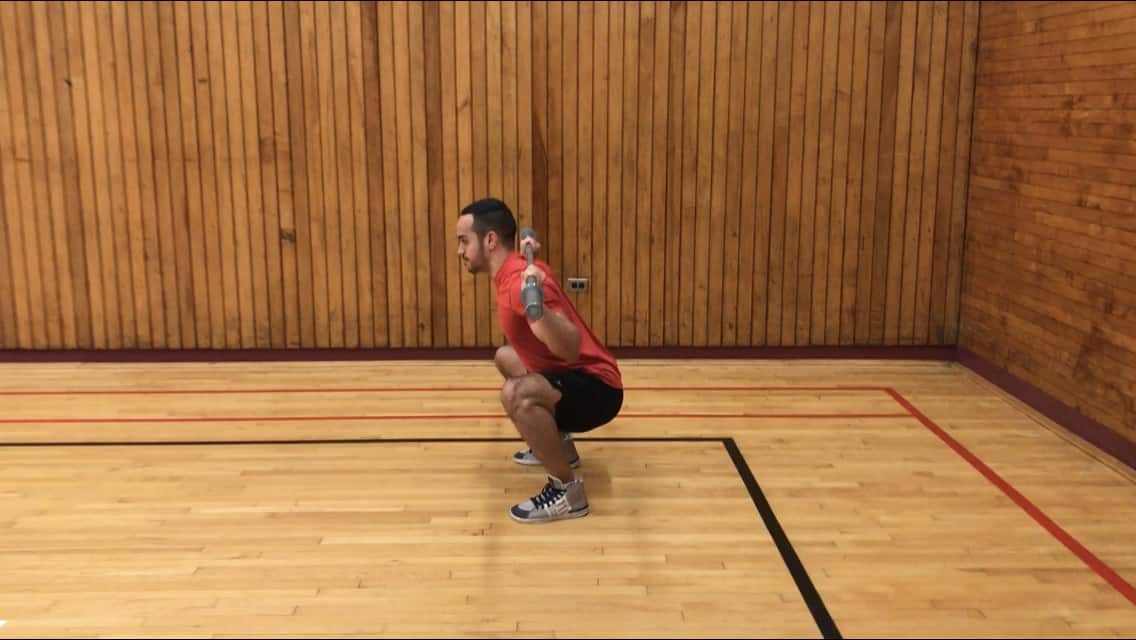
- While in the hole, keep everything engaged, especially your core muscles
- Reverse the movement by pushing straight back up with even pressure across your feet
- Exhale at the top of the lift and squeeze your glutes to finish extending your hips
- Maintain a flat neutral spine throughout the movement
COMMON PAUSE SQUAT MISTAKES
Not Pausing Long Enough
Doing this movement with a complete dead stop pause at the bottom of the exercise is essential. A mistake many people make is pausing for a fraction of a second and coming back immediately.
Do a 2-second pause after you have become motionless at the bottom of the movement; otherwise, the exercise is useless.
Other Mistakes
The same mistakes in the Back Squat can also occur in the pause squat.
By the way… the pause squat is just one of several compound exercises you should be doing.
To see a list of all the most important exercises, check out our E-book that goes over all of the best compound movements for the entire body!
I also review them in The Best Compound Exercises of All Time.
FREQUENTLY ASKED QUESTIONS
Do pause squats help The Regular squat?
Yes, pause squats are a great way to improve the regular squat as they:
- improve your technique,
- strengthen the bottom portion of the movement (which is a common sticking point), and
- increase your overall muscle mass.
I have used the pause squat to help me break through squatting plateaus over the years.
Are pause squats harder?
Pause squats are much harder than regular squats because they take away the stretch reflex, which can help you bounce out of the bottom.
The pause squat requires that you bring the bar to a complete dead stop and get it back in motion.
As Newton eloquently described, it is much easier to keep an object in motion that is already in motion.
How Long Should Pause Squat Reps Be?
Pause for at least 2 seconds after becoming motionless at the bottom of the movement.
After the pause, explode back up using as much power as possible while maintaining proper form.
Do pause reps build strength or power?
Paused reps improve both strength and power as well as your squat technique. However, expect to lift less weight on a pause squat compared to a regular back squat.
How heavy should pause squats be?
Most lifters can generally pause squat 85-90% of their regular back squat. However, given that the pause squat is significantly more challenging than a traditional squat, always start with an even lighter weight.
Start with 15-20% less than your back squat.
What Sets and Reps Should I Use?
Pause squats are hard! You will get out of breath fast. I recommend performing three sets of 4 to 6 reps per set.
The greater time under tension may also increase muscle soreness, so factor that into your programming.
Are pause squats Good for hypertrophy?
Pause squats are good for hypertrophy because they increase the time under tension of your quads, glutes, and hamstrings.
Research shows that increasing TUT is one of the best ways to maximize muscle hypertrophy.
How Often Should I Do This Exercise?
You can implement the pause squat into your squat workouts in one of two ways.
- First, you can use the paused squat as your main knee flexion exercise movement and progress just as you would any exercise.
- Or you can do it on its own squat day, using a different variation earlier in the week and the pause squat later in the week.
HOW CAN I INTEGRATE THE PAUSE SQUAT INTO MY TRAINING PROGRAM?
Check out The WCT Best Workout Template For Busy Professionals to find a simple way to add the pause squat and other great exercises into your strength training routine.
PAUSE SQUAT ALTERNATIVES
Check out my other in-depth guides for different squat variations you can do to improve your squat strength!

Alex Robles, MD, CPT / Brittany Robles, MD, MPH, CPT
Alex & Brittany Robles are physicians, NASM Certified Personal Trainers, and founders of The White Coat Trainer: a resource dedicated to improving the health and fitness of busy professionals using time-efficient strategies. Their advice has been featured in My Fitness Pal, Prevention, Livestrong, Reader’s Digest, Bustle, The Active Times, and more. Learn more about them here.

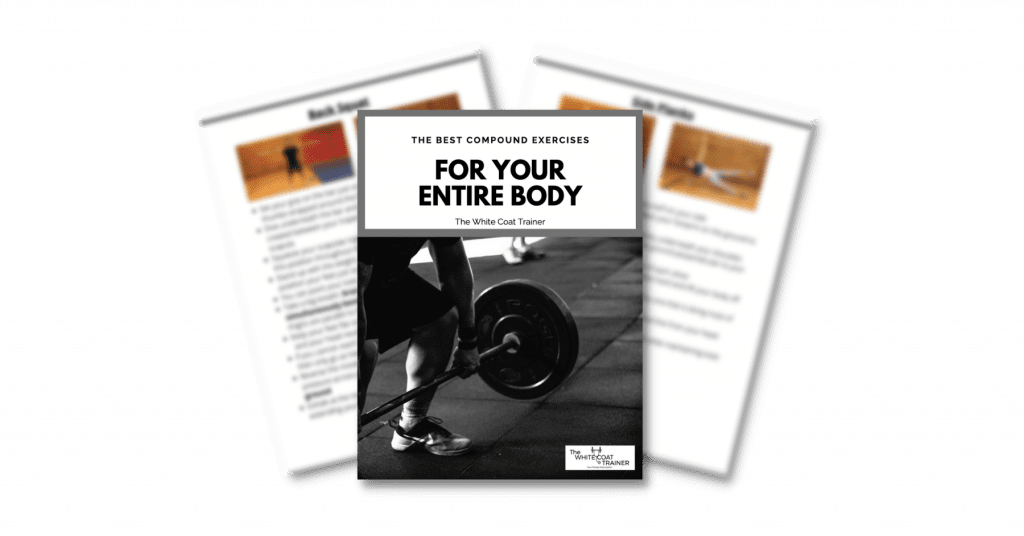
In the paused squat, can you breathe at the bottom?
Hi Andrea,
I recommend that you do not breathe at the bottom. Ideally everything should be kept tight and stable, which can best be accomplished by holding your breath and bracing your core. Breathe at the top of the exercise.